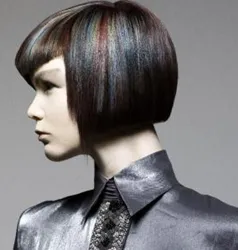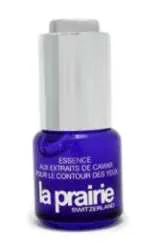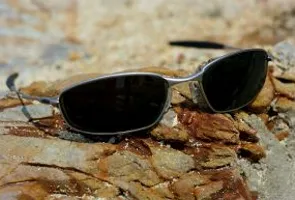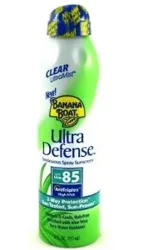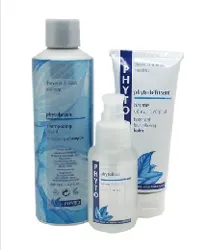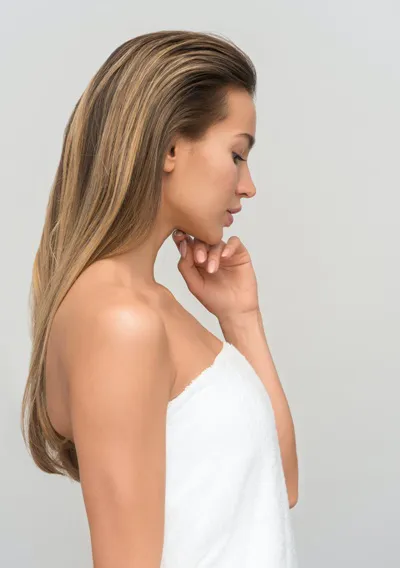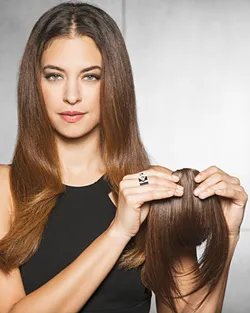
Sun Protection Factors - SPF Faqs
Introduction
The sun protection factor (SPF) of a sunscreen is a laboratory measure of the effectiveness of sunscreen. Sun protection needs to be provided not only to the skin on the body, but also the scalp, the ears and around the hairline. The higher the SPF, the more protection a sunscreen offers against UV-B which is the ultraviolet radiation which causes sunburn. SPF is the amount of UV radiation required to cause sunburn on skin with the sunscreen on, relative to the amount required without the sunscreen. There is a popular misconception that SPF relates to time of solar exposure. SPF MisconceptionsFor example, many consumers believe that, if they normally get sunburn in one hour, then an SPF 15 sunscreen allows them to stay in the sun 15 hours (i.e., 15 times longer) without getting sunburn. This is not true because SPF is not directly related to time of solar exposure but to amount of solar exposure.
Although solar energy amount is related to solar exposure time, there are other factors that impact the amount of solar energy, like the time of day. This is because, during early morning and late afternoon, the sun's radiation must pass through more of the Earth's atmosphere before it gets to you. Sunscreen FactorsIn practice, the protection from a particular sunscreen depends on factors such as: - The skin type of the user - The amount applied and frequency of re-application. - Activities in which one engages (for example, swimming leads to a loss of sunscreen from the skin). - Amount of sunscreen the skin has absorbed. The SPF is an imperfect measure of skin damage because invisible damage and skin aging are also caused by ultraviolet type A (UVA, wavelength 320 to 400 nm), which does not cause reddening or pain. Conventional Sunscreen Versus Broad Spectrum SunscreensConventional sunscreen blocks very little UVA radiation relative to the nominal SPF; broad spectrum sunscreens are designed to protect against both UVB and UVA. According to a 2004 study, UVA also causes DNA damage to cells deep within the skin, increasing the risk of malignant melanomas. Even some products labeled "broad-spectrum UVA/UVB protection" do not provide good protection against UVA rays. The best UVA protection is provided by products that contain zinc oxide, avobenzone, and ecamsule. Titanium dioxide probably gives good protection, but does not completely cover the entire UV-A spectrum, as recent research suggests that zinc oxide is superior to titanium dioxide at wavelengths between 340 and 380 nm. Consumer Confusion Over SPF Protection
Owing to consumer confusion over the real degree and duration of protection offered, labeling restrictions are in force in several countries. In the EU sunscreen labels can only go up to SPF 50+ (actually indicating a SPF of 60 or higher) while Australia's upper limit is 30+. The United States does not have mandatory, comprehensive sunscreen standards, although a draft rule has been under development since 1978. In the 2007 draft rule, Food and Drug Administration (FDA) proposed to institute the labeling of SPF 50+ for sunscreens offering more protection. This and other measures were proposed to limit unrealistic claims about the level of protection offered (such as "all day protection"). UV-B sunlight spectrum (on a summer day in the Netherlands), along with the CIE Erythemal action spectrum. The effective spectrum is the product of the former two. Measuring SPFThe SPF can be measured by applying sunscreen to the skin of a volunteer and measuring how long it takes before sunburn occurs when exposed to an artificial sunlight source. In the US, such an in vivo test is required by the FDA. It can also be measured in vitro with the help of a specially designed spectrometer. The actual transmittance of the sunscreen is measured, along with the degradation of the product due to being exposed to sunlight.
In this case, the transmittance of the sunscreen must be measured over all wavelengths in the UV-B range (290–320 nm), along with a table of how effective various wavelengths are in causing sunburn (the erythemal action spectrum) and the actual intensity spectrum of sunlight (see the figure). Such in vitro measurements agree very well with in vivo measurements. Numerous methods have been devised for evaluation of UVA and UVB protection The most reliable spectrophotochemical methods eliminate the subjective nature of grading erythema. How SPF Is CalculatedMathematically, the SPF is calculated from measured data as: where E(λ) is the solar irradiance spectrum, A(λ) the erythemal action spectrum, and MPF(λ) the monochromatic protection factor, all functions of the wavelength λ. The MPF is roughly the inverse of the transmittance at a given wavelength. The above means that the SPF is not simply the inverse of the transmittance in the UV-B region. If that were true, then applying two layers of SPF 5 sunscreen would be equivalent to SPF 25 (5 times 5). The actual combined SPF is always lower than the square of the single-layer SPF. Determining Your Personal SPF NumberSun protection is an everyday must for anyone concerned with keeping their skin in top shape (and that includes avoiding wrinkles, brown discolorations, building collagen, keeping skin firm, and even preventing skin cancer). SPF 15 is the minimum rating to look for and greater is better for some skin colors and conditions; all sunscreens must be liberally applied; and UVA protection is critical. UVA protection depends on the active ingredients in the product you are using so be sure one or more of these active ingredients are included: avobenzone (sometimes listed as butyl methoxydibenzoylmethane), titanium dioxide, zinc oxide, Mexoryl (ecamsule) or, outside the U.S., Tinosorb. How To Choose And Apply Sunscreen
There are several important factors that influence how you choose and should apply a sunscreen: 1. How long you are going to be in the sun or sitting next to a window (UVA radiation, the sun's most damaging rays, come through windows). The longer you are going to be in the sun or exposed to UVA radiation via windows the higher the SPF number you need to look for. 2. Are you willing to apply your chosen sunscreen liberally? No matter what SPF rating you choose, you have to apply it liberally. If you aren't applying it liberally always go for a higher number to assure you are getting as much sunscreen ingredients on your skin as possible. 3. Will you be swimming or perspiring heavily? If so, go for sunscreens labeled water resistant or very water resistant. Be sure to reapply as directed, especially after toweling off. Skin Type And Makeup ApplicationYou'll also want to take into consideration your skin type and whether or not you'll be wearing makeup. 1. Those with normal to dry skin should use sunscreens in a lotion or cream base. 2. Those with oily or combination skin should go for sunscreens formulated in a lightweight lotion with a matte finish, a liquid, or an alcohol-free gel base. Many spray-on sunscreens are excellent for oily skin. 3. If you're going to be wearing foundation, you can choose a foundation with sunscreen and pair it with a moisturizer with sunscreen and a pressed powder with sunscreen! What's Your SPF Rating?Your ideal SPF number is a multiplication figure based on your skin color and the SPF number on the product. Identify Your Skin Color
Regardless of your skin color and how easily you tan, wrinkles, skin discolorations and skin cancers are primarily caused by unprotected sun exposure! Level One - skin is very fair tends to freckle easily. This type of skin also burns easily within about 20 minutes of direct sun exposure. It never tans. This is a common skin color for people with blue eyes and light hair such as blonde or red. Level Two - skin is fair to light burning within 30 minutes of direct sun exposure. Tanning may occur, but is limited. This skin color is common in people with blue, green, or hazel eyes. Natural hair color is usually red, blonde, or light brown hair. Level Three - skin is light to medium or olive. It sometime burns with about 40 minutes of direct sun exposure. Tanning is possible, but typically sunburn happens first. This level can apply to those of any hair or eye color. Level Four - skin is medium to tan and it rarely burns. It can turn pink in about 60 to 90 minutes of direct sun exposure. Ultimately it tans easily. This is common for people with dark hair and eyes. Level Five - skin is brown to dark brown. It very rarely burns and tans easily in about two hours of sun exposure. This type of skin occurs on people with dark hair and eyes. They are most often of Middle Eastern or African-American descent. Level Six - skin is black skin and rarely burns. It always tans, though a tan is usually not apparent due to the depth of the natural skin color. Doing The Math On SPF
Your Level of Sunburn Risk x by the SPF Rating = Safe Sun Exposure for Your Skin Color The SPF number is a rating that determines how long you can stay in the sun without burning when you wear that product without needing to reapply it. It does not indicate quality of protection, just length of time. Here's how to do the math. If you have: Level 1 skin (very fair): That means you usually get a burn in about 15 to 20 minutes of unprotected sun exposure. Determining your skin's response to various SPF ratings tends to work in the follow way: SPF 15 x 20 minutes = 300 minutes (5 hours) of protection SPF 30 x 20 minutes = 600 minutes (10 hours) of protection SPF 45 x 20 minutes = 900 minutes (15 hours) of protection Level 2 skin (fair to light): That means you usually get a burn in about 30 minutes of unprotected sun exposure. Determining your skin's response to various SPF ratings tends to work in the follow way: SPF 15 x 30 minutes = 450 minutes (7.5 hours) of protection SPF 30 x 30 minutes = 900 minutes (15 hours) of protection SPF 45 x 30 minutes = 1,350 minutes (22.5 hours) of protection Level 3 skin (light to medium/olive): That means you usually get a burn in about 40 minutes of unprotected sun exposure.
Determining your skin's response to various SPF ratings tends to work in the follow way: SPF 15 x 40 minutes = 600 minutes (10 hours) of protection SPF 30 x 40 minutes = 1,200 minutes (20 hours) of protection SPF 45 x 40 minutes = 1,800 minutes (30 hours) of protection Level 4 skin (medium to tan): That means you usually get a burn in about 60 minutes of unprotected sun exposure. Determining your skin's response to various SPF ratings tends to work in the follow way: SPF 15 x 60 minutes = 900 minutes (15 hours) of protection SPF 30 x 60 minutes = 1,800 minutes (30 hours) of protection SPF 45 x 60 minutes = 2,700 minutes (45 hours) of protection Level 5 and Level 6 skin (brown to dark brown or black). That means you usually get a burn in about 120 minutes (2 hours) of unprotected sun exposure.
Determining your skin's response to various SPF ratings tends to work in the follow way: SPF 15 x 120 minutes = 1.800 minutes (*30 hours) of protection SPF 30 x 120 minutes = 3,600 minutes (60 hours) of protection SPF 45 x 120 minutes = 5,400 minutes (90 hours) of protection Level 5 and 6 skin should do just fine with a well-formulated sunscreen rated SPF 15. However, liberal applications is still important. If you do not think you'll be applying the sunscreen as liberally as you should, consider a sunscreen rated SPF 30. SummarySun protection needs to be provided not only to the skin on the body, but also the scalp, the ears and around the hairline. Social Media Network InformationPlease follow me on Twitter at: http://Twitter.com/HairBoutique. I look forward to meeting new Visit us at Hairboutique.com located at: http://www.HairBoutique.com, on Facebook, MySpace and YouTube. Thank you for visiting us at The HairBoutique Blog and for leaving your comments. They are very much appreciated. We apologize in advance but must remove any direct advertisements or solicitations. - Revised Date: 10/04/11 | |||||||||||||||||||||||||||
| If you want to talk more about this or other hair care articles on HairBoutique.com or anywhere else, please post a message on HairBoutique.com's Hair Talk Forums.
|
Social Media Network Information
Please follow us on Twitter at: https://Twitter.com/HairBoutique. I look forward to meeting new people from all walks of Twitter and learning from their Tweets.













